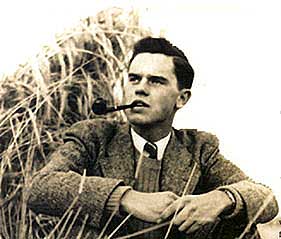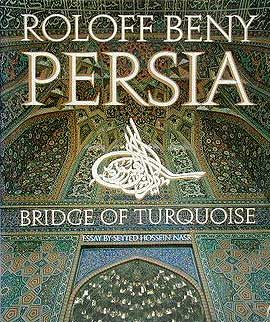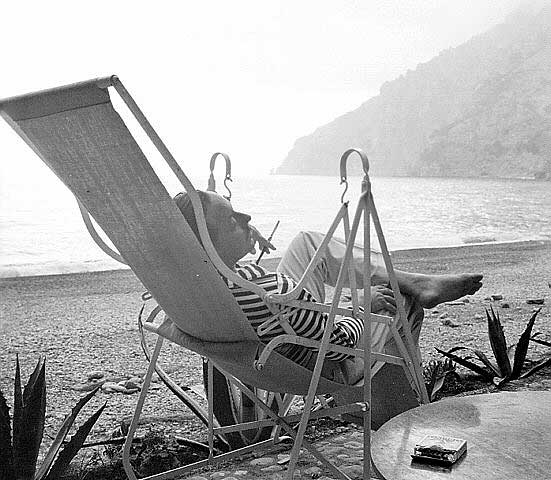Dear Artist,
I used to know a photographer by the name of Roloff Beny. Roloff was responsible for a dozen big-format coffee table books. “Persia, Bridge of Turquoise,” was well known, as well as his famous, “To Every Thing There is a Season.” Roloff picked an area and went through it thoroughly. A friend of the Shah of Iran, he once took a red-carpeted year to travel that country in his Land Rover. Roloff generally arose before dawn and was already set up at first light. The midday sun found him asleep in the FWD. I never did figure out where or when his faithful driver slept. As evening and the “magic hour” approached Roloff, was back on the job. “As an artist you should be in business until the time when you almost can’t see,” he used to say. A few years ago he met an untimely end in his bathtub in Rome.
Here on Lake of the Woods I’m appreciating Roloff’s dictum. Being top-lit, midday subjects are often lacking in form. Foregrounds are difficult to separate from backgrounds. Shadows are short, sharp-edged and dull, often blackish in tone. But morning and evening shadows are long, often elegant and colour-saturated. Cast shadows make for better design and provide compositional connections. Reflected light is more readily apparent. In the darks there is greater mystery than can be found at midday. There’s more opportunity for texture, counter-light, chiaroscuro, auras, edge-lighting and increased tonal range. Opposites on the colour wheel interact with greater hue and therefore drama. Also, forms tend to become generalized which can help the artist to see the “big picture.” Furthermore, late and early skies take on energy and animation that seldom exist at midday. Philosophically, beginnings and endings are better than middles, and this may account for some of the appeal.
Roloff Beny (1924-1984) learned to love evening light in the Greek islands. In his early days he was a painter. I once made the mistake of asking him when it was he changed from “artist” to “photographer.” “My photography is the greatest art,” he snapped. You had to watch yourself with Roloff. As I write this it’s a moonless night and the main illumination is my laptop screen. Now if we can just get our boat away from this precious island, out of this murky bay and home without hitting an underwater rock.
Best regards,
Robert
PS: “Mad dogs and Englishmen go out in the midday sun.” (Noel Coward)
Esoterica: If you must work at midday there are some tricks you can use. Calculated glazing or overall toning with warms (such as Burnt sienna, Cadmium orange or Quinacridone gold) or adding a purple passion to your palette can often modify works for the better. Ultramarine blue is another magic bullet. Afterthoughts can be convincing. Having said that, it has been my experience that you learn the most and are most moved at sunup and sundown. When my work becomes uninteresting it’s often just that I’m sleeping in too late or going to bed too early.
Roloff Beny
photos courtesy of Roloff Beny/National Archives of Canada
Connection to the land
by Helen Channen, Kingston, ON, Canada
So there you were, back at “the Lake” where I grew up, and where my thoughts seem often to wander! Is it homesickness or mere nostalgia, longing for the sense of familiarity, childhood friends and attachment to Nature, or simply sentimentalism? I’m never certain why connection to the land, to the Shield with its bogs, swamps, muskeg, creeks and lakes is so deep and mysterious. Why do rocks, rugged terrain, mosses clinging to fallen trees, bedrock in sunshine, invite one to sit and meditate before reaching for sketchbook and pencil? Before I started to paint I didn’t understand how those feelings, and my own inner self, were so involved with the realness of experiencing and rambling through that country.
Beny’s friendship with the shah of Iran
by Philip Koch, Baltimore, MD, USA
Roloff Beny was a talented photographer (should I say photographic artist?). But his friendship with the shah of Iran was creepy. The Shah was installed in power in a coup by the Central Intelligence Agency and proceeded to rule Iran to suit the US State Department rather than the Iranian people. Much of the hatred of the US government in Iran to this day stems from the Shah’s oppressive rule. Artists serve the cause of art better when they keep a healthy and skeptical distance from the rich and powerful. Unfortunately there are always a few artists who kiss up to the powerful to further their careers.
Eclipsed by others
by Anonymous
Roloff Beny died before the internet revolution. His will enforces all copyrights and consequently it is impossible to find many of his best images in the public domain. All of his books are out of print. Artists of all sorts have to come to terms with this problem. By preventing one’s images from being viewed it pretty well guarantees that a star will be eclipsed by others.
Grew up with Beny images
by Catherine Campbell, Cobble Hill, BC, Canada
Your letter about Roloff Beny brought an instant smile to my face. My grandparents had a copy of “To Everything There is a Season.” During our summer visits to their home in the Okanagan I spent my days swimming, boating, picking raspberries and thumbing through that magical tome. I think it was one of the early influences that fueled my passions for art and travel. When my grandparents were gone there was a note that the Beny book was to go to me. It is one of my most treasured possessions, tattered dust cover and all.
“Switching” to photography
by Mary Madsen
Regarding your amusing anecdote about Roloff Beny switching from art to photography, I haven’t “switched” from one to the other, I’ve simply been inexorably drawn to photography and find that the easel and clay is always playing second fiddle to what I consider the most precious of the arts. Sure, I can slap the clay around and “express” myself with paint, but what can possibly be more unique than looking at what everybody else sees and seeing it with an eye that has never come before on this earth and will never come again? When I step out into the morning light with my camera, something within becomes more aware, and I enter another world as I’m framing, second by second, what Cartier-Bresson called “instant drawing.” It’s not easy, and it takes time to develop this particular eye. It’s an experience that involves all the senses, a synthesis of machinery, technology, the elements of nature and every rule and idiom of the creation of art, as well as the full and total presence of the artist.
Where are the plein air painters?
by Raynald Murphy
I have just returned from a week painting trip at le Bic, a beautiful Provincial Park north of Quebec City situated on the Fleuve St-Laurent. My friend and I have been painting outdoors regularly for close to ten years and very rarely have we encountered another painter painting or drawing on site. Where are they all? In their studios, I guess, snuggling to their warm cups of coffee copying their photographs? Tomorrow morning I am off leading an outdoor workshop to some 25 participants hopefully leaving them at the end of the day with the desire to paint/draw more often en plein air. Sometimes we feel we are a dying breed. Do you feel likewise? And is there a secret formula to convincing more artists to get out there and breathe in nature?
(RG note) Thanks, Raynald. Where are they? They’re in California. The hills are full of them. Incidentally, Raynald Murphy writes a regular article on technical watercolour tips in l’Aquarelliste, a watercolour society magazine, published 6 times yearly in French.
Compositional use of shadows
by Brad Greek, Mary Esther, FL, USA
I’ve had to visualize the concept of shadows creating a more interesting composition. I guess it might be natural for an artist to know this without studying it. Lately I’ve been placing shadows into my paintings from the edges of the paintings in order to give the idea that there is more there than you can see. For this concept, early morning or late afternoon settings are best.
Painting solitudes
by Pippi Johnson, Kenora, ON, Canada
I too am painting here on Lake of the Woods. I live here 7 months a year and the rest of the time in Florida… a place with very different light. I have literally piles of paintings and can’t figure out how to market them… any suggestions on this in the future would help. I really connect with many of your observations… your comments on light and shadow on this lake were very well observed. I too paint landscapes from an island. The same one for thirty years! I will have a show of my garden and landscape painting in our museum on the Main street in Kenora, Ontario, Canada in mid-July. If you get to town… be sure to go and see our museum, and our twenty outdoor murals.
Chance photo reveals potential
by Mary Jean Mailloux, Oakville, ON, Canada
This letter reminds me of a painting I did a couple of summers ago while at the cottage. For 3 days in a row I set myself up in the afternoon sun and painted a floral/cottage still-life. I loved the delicate floral trail against the rugged cedar log exterior. It turned out OK. About 3 months ago I came across a photo my hubby took of the subject matter in late afternoon early evening sun. A hard shadow is falling across half the composition. It is infinitely more interesting and dramatic than my painting. So I’m going to un-frame and add the shadow just as you suggested with probably a mixture of Antwerp blue and burnt sienna.
Out in the midday sun
by Julie Rodriguez Jones, Sparks, NV, USA
I know you have an “Art-Dog” but your seating and shading arrangements are a bit unclear in the picture. Is it a plain chair with an umbrella somehow attached or duct taped on? Contending with the midday sun and heat is soon to be a challenge for me as I’m moving to Nevada in a couple of weeks and would appreciate some suggestions as I plan on setting aside the computer periodically and using real watercolor and pencil for some plein air work.
(RG note) The Art-Dog has a couple of holes in the back that takes a big beach umbrella. This easel, now in the “Mark 4” evolvement, was invented by me and built by my brother Denis. The idea was to have a comfortable, ready-to-go workstation that could be towed behind a bike.
Joyous adventure
by Leslie Pierce, Austin, TX, USA
I am definitely making progress since I first wrote to you concerning changing from photography to painting and drawing. It has been so exciting and yet terrifying to start over again. The way I see it though, it is much like being a very good musician who decides to learn new instruments. The fundamentals are already covered as well as the inherent will to improvise; now the translation factor kicks in. It is a joyous adventure!
Apples and oranges
by Dan Griffith
As well as painting I also enjoy the art of photography, not only the viewing but the exposing of film and the printing of the image. I have been showing my work for some time. I really enjoy the shows that are of mixed media. I am still in wonder of some folks that are against photography when it is included in shows. These days most shows are made up of mixed media i.e. wood, glass, clay, bronze, oil, watercolor, and on and on. Perhaps you could shine some light on this subject of apples and oranges.
(RG note) Shows with a variety of media must be juried by category. In this sort of show it’s a good idea to avoid having to give a “best in show.” Best in category is okay but the jurors should have the right to throw out everybody in a category if the stuff is generally substandard in their eyes. Photography is a noble art that need not threaten painters.
Turner got around
by Janice K Vogel, Senden, Germany
We made a trip to Essen (about an hour from here) to view a large Turner exhibit. We saw that Turner was much more than the “ship, water, darkness and light” painter that some would pigeonhole him to be. We were impressed by how much he got around Europe, given the era in which he lived. Your letter prompted me to take out the large Exhibition book that we bought (so we could really see what was there, once we got back home and put our son to bed) and it was nice to leaf through it again this evening. During an overnight stay in Vienna recently, we happened unexpectedly upon a Klimt, Schiele, Kokoschka exhibit. We were impressed by the texture and integrated gold and silver leaf in Klimt’s work and by the size of The Kiss in its original form.

RBald Head – Maine oil painting on canvas by |
You may be interested to know that artists from every state in the USA, every province in Canada, and at least 115 countries worldwide have visited these pages since January 1, 2004.
















